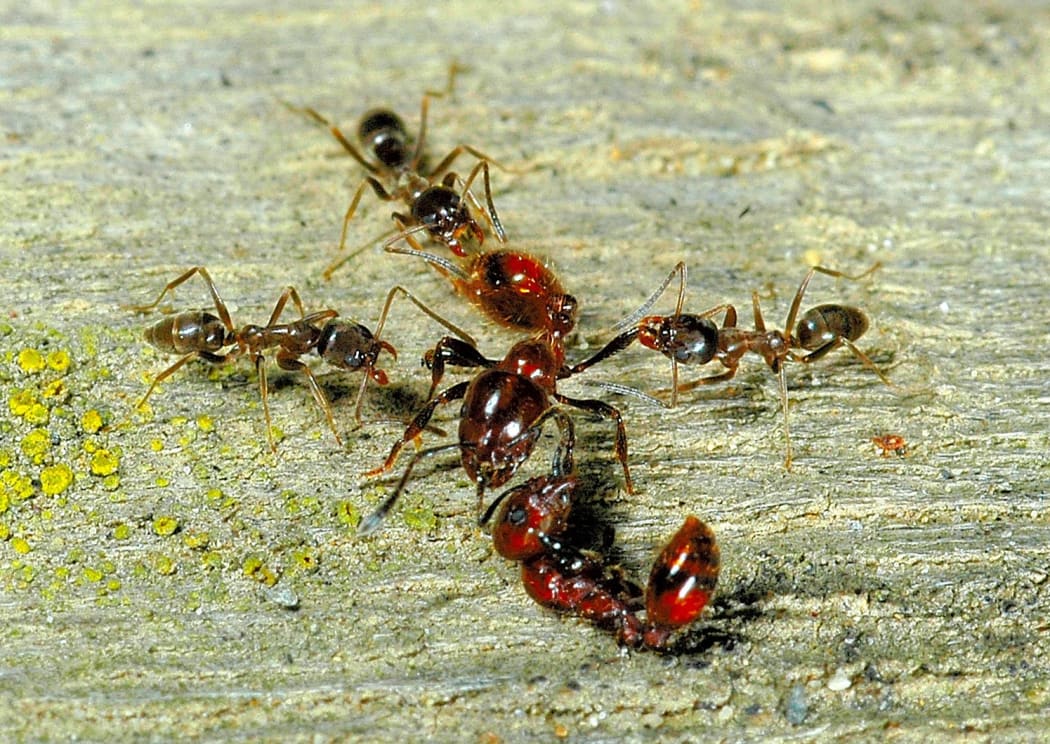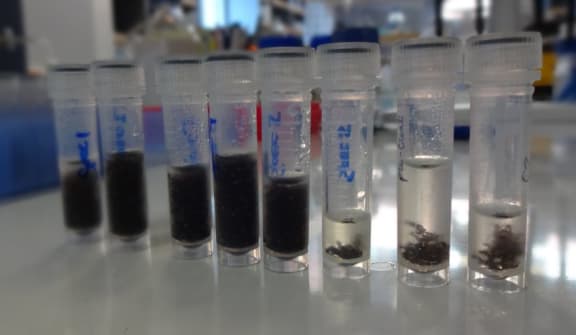
Alexandra Sebastien analysed genomic data of Argentine ant populations from New Zealand and other parts of the world. Photo: Veronika Meduna / RNZ
Argentine ants (Linepthema humile) are an invasive pest that has spread throughout most of New Zealand. Now a team of biologists found that the ants are also a reservoir for a virus that is deadly to honeybees.
Argentine ants are listed among the 100 of the world’s worst invasive species, and they have established populations on every continent except Antarctica.
Some people refer to them as the Genghis Khan of the ant world. They come along and kill off all their competitors and other species within the area and take over the landscape.
Phil Lester, Victoria University

Ant fight: invasive Argentine ants attacking the larger southern ant, a species that is native to New Zealand and common outside of forest ecosystems. Photo: Phil Lester

Phil Lester with a honey bee. One of the viruses found in Argentine ants is the deformed wing virus, which is deadly for bees. Photo: Veronika Meduna / RNZ
Phil Lester and his team joined forces with a group known as virus hunters at the Institute of Environmental Science and Research to analyse genomic data of Argentine ant populations in New Zealand, Australia and Argentina. They found that the ants host the deformed wing virus, which affects honeybees, but they also discovered a new virus, which holds potential as a biological control agent.
The team was motivated to look at the ants’ microbiome because they have monitored populations for many years and found that some may reach several hectares in size, but then shrink and sometimes completely die off. The question was whether there might be a pathogen, such as a virus, that causes the population decline.
Doctoral student Alexandra Sébastien says viruses have been involved in population crashes in other insect species, and the ultimate goal of her project is to find a virus that is specific to Argentine ants and could be used as a biological control agent.

Each of these vials contains frozen samples of Argentine ants from different populations. Photo: Veronika Meduna / RNZ
The team may have a promising candidate in a virus they christened LHUV-1 (pronounced love-one).
“It is the first time it has been described in Argentine ants,” says Alexandra Sébastien. “We’re kind of hoping that we will not find it in other species. Our hope is that we will find it only in Argentine ants.”
Phil Lester says the discovery of the deformed wing virus highlights a bigger problem with invasive pests. The virus is deadly to honeybees, and is mostly transferred to the bees by the Varroa mite. However, he says it is now clear that the ants are another reservoir of the virus.
When a species comes into the country we tend to look at that as just an individual species. But it’s not. It’s got a whole microbiome associated with it … and some of that may well be deleterious to other organisms in the environment.

